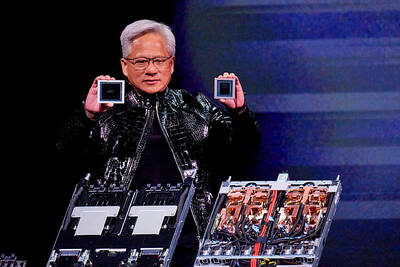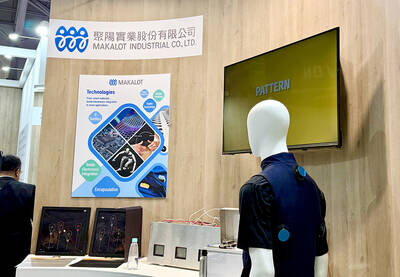A tour package proposed by a state-run travel agency in China to parts of Taiwan governed by the “pan-blue” alliance, headed by the opposition Chinese Nationalist Party (KMT), has drawn mixed responses.
Beijing-based China International Services this month launched the Taiwan Affairs Office-endorsed “Tour to ‘blue’ counties and cities” in Taiwan, the Chinese-language Apple Daily newspaper reported yesterday.
The six-day tour, priced at less than NT$20,000 (US$638), was proposed in line with Beijing’s call to visit pan-blue-governed counties and cities, the report said.
The heads of the cities and counties welcomed the idea, but Ting Yun-kung (丁允恭), spokesman of the “pan-green” Kaohsiung City Government, said Taiwan is a colorful place and that “it is a pity for people to discover only one color,” the Apple Daily said.
Kaohsiung Mayor Chen Chu (陳菊) is considered a heavyweight in the ruling Democratic Progressive Party (DPP), which leads the pro-Taiwan independence “pan-green” camp.
Exchanges between Taiwan and China have cooled in many sectors, including tourism, since President Tsai Ing-wen’s (蔡英文) inauguration on May 20.
The number of Chinese visiting Taiwan fell 32 percent in August from a year earlier, Tourism Bureau data showed, a decline some say has been engineered by the Chinese government.
Last month, a delegation of six KMT and two independent officials visited China to promote Taiwan’s agricultural produce and tourism. They were reportedly warmly received by Chinese authorities.
Asked about the controversial tour package, New Taipei City Mayor Eric Chu (朱立倫), a KMT member, said he hoped Chinese tourists would continue to visit Taiwan and that Taiwan would maintain cooperative relations with China in agricultural and industrial sectors.
“It is just that we are a window and [we] hope more tourists will come to Taiwan,” Chu said.
Some criticized the tour package as China’s attempt to divide Taiwan, but Chu shrugged off the idea, saying that people open their arms to tourists in the same way as they welcome cross-strait industrial and agricultural cooperation.
Taipei Mayor Ko Wen-je (柯文哲) said he doubted Beijing’s strategy is practical and feasible since the nation’s international airports in Taoyuan, Taichung and Kaohsiung are under pan-green administration.
“I do not believe Chinese tourists can just parachute into Taiwan,” Ko said, adding that the strategy would prove to be of no avail.
Ko said that Taipei would still try to attract Chinese visitors and it has plans to woo visitors from the ASEAN and Muslim countries.

Nvidia Corp chief executive officer Jensen Huang (黃仁勳) on Monday introduced the company’s latest supercomputer platform, featuring six new chips made by Taiwan Semiconductor Manufacturing Co (TSMC, 台積電), saying that it is now “in full production.” “If Vera Rubin is going to be in time for this year, it must be in production by now, and so, today I can tell you that Vera Rubin is in full production,” Huang said during his keynote speech at CES in Las Vegas. The rollout of six concurrent chips for Vera Rubin — the company’s next-generation artificial intelligence (AI) computing platform — marks a strategic

REVENUE PERFORMANCE: Cloud and network products, and electronic components saw strong increases, while smart consumer electronics and computing products fell Hon Hai Precision Industry Co (鴻海精密) yesterday posted 26.51 percent quarterly growth in revenue for last quarter to NT$2.6 trillion (US$82.44 billion), the strongest on record for the period and above expectations, but the company forecast a slight revenue dip this quarter due to seasonal factors. On an annual basis, revenue last quarter grew 22.07 percent, the company said. Analysts on average estimated about NT$2.4 trillion increase. Hon Hai, which assembles servers for Nvidia Corp and iPhones for Apple Inc, is expanding its capacity in the US, adding artificial intelligence (AI) server production in Wisconsin and Texas, where it operates established campuses. This

US President Donald Trump on Friday blocked US photonics firm HieFo Corp’s US$3 million acquisition of assets in New Jersey-based aerospace and defense specialist Emcore Corp, citing national security and China-related concerns. In an order released by the White House, Trump said HieFo was “controlled by a citizen of the People’s Republic of China” and that its 2024 acquisition of Emcore’s businesses led the US president to believe that it might “take action that threatens to impair the national security of the United States.” The order did not name the person or detail Trump’s concerns. “The Transaction is hereby prohibited,”

Garment maker Makalot Industrial Co (聚陽) yesterday reported lower-than-expected fourth-quarter revenue of NT$7.93 billion (US$251.44 million), down 9.48 percent from NT$8.76 billion a year earlier. On a quarterly basis, revenue fell 10.83 percent from NT$8.89 billion, company data showed. The figure was also lower than market expectations of NT$8.05 billion, according to data compiled by Yuanta Securities Investment and Consulting Co (元大投顧), which had projected NT$8.22 billion. Makalot’s revenue this quarter would likely increase by a mid-teens percentage as the industry is entering its high season, Yuanta said. Overall, Makalot’s revenue last year totaled NT$34.43 billion, down 3.08 percent from its record NT$35.52